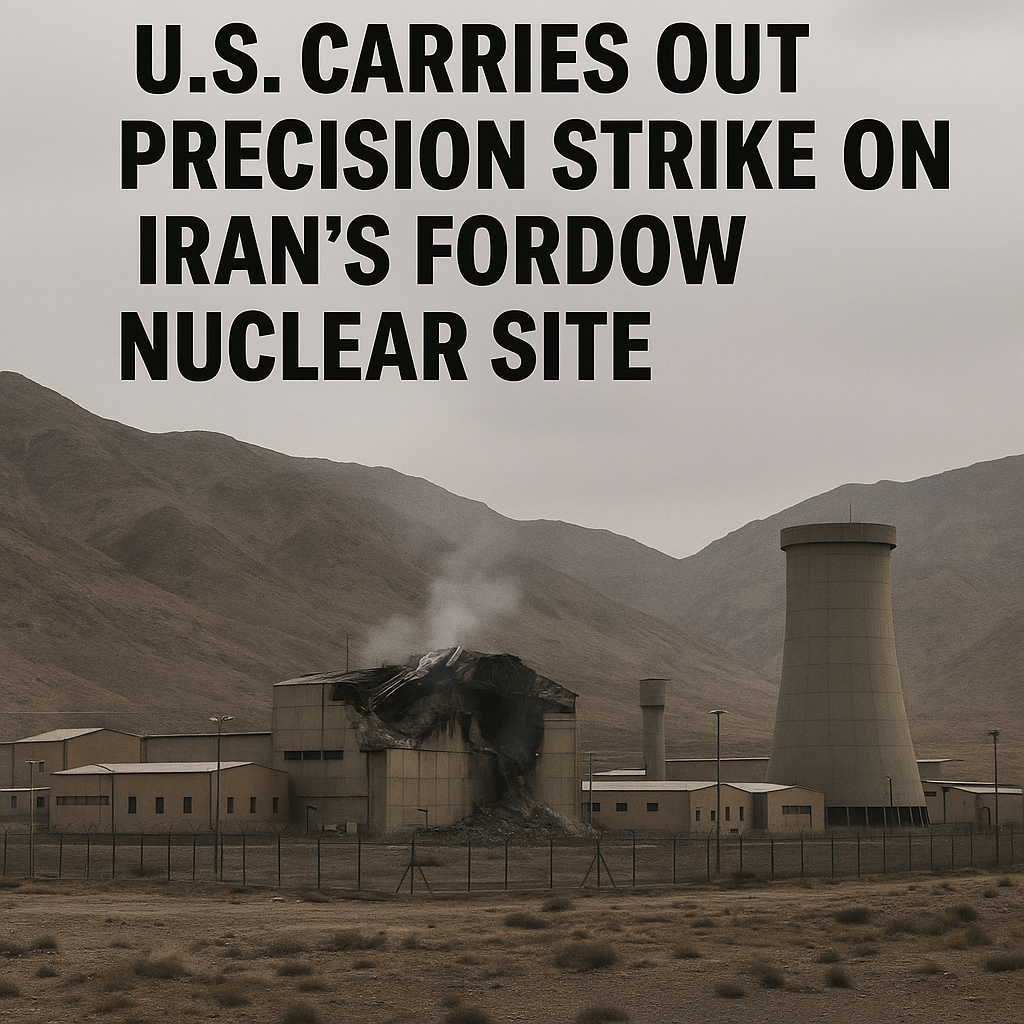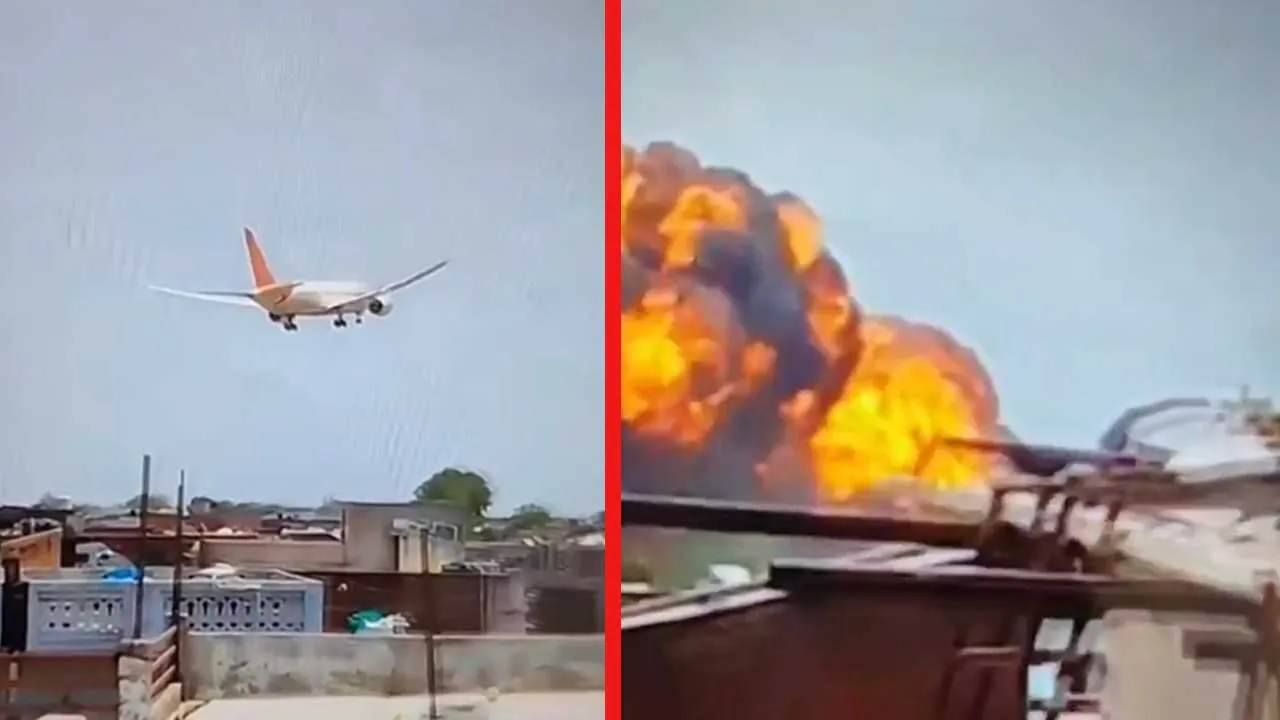🇺🇸 U.S. Launches Strikes on Iran’s Nuclear Sites in Major Escalation
Washington, June 22, 2025 — In a dramatic intensification of Middle East tensions, President Donald Trump announced that the United States has conducted airstrikes on three fortified Iranian nuclear sites—Fordow, Natanz, and Isfahan—marking the most direct U.S. military action in Iran in decades.
Attack on Fordow Nuclear Site
Two-pronged attack:
Fordow: Six GBU‑57/B Massive Ordnance Penetrators delivered by B‑2 stealth bombers.
Natanz and Isfahan: Approximately 30 Tomahawk cruise missiles launched from submarines and surface vessels .
B-2 Spirit: B‑2 Spirit bombers—valued at $2.1 billion each—were used for their radar-evading capabilities and ability to deploy bunker-busters deep underground .
Tomahawk Cruise Missiles: The Tomahawk cruise missile is one of the most iconic and effective long-range, precision-guided weapons in the United States military arsenal. Developed by Raytheon Technologies, the missile has been in service since the 1980s and has undergone multiple upgrades to remain a vital tool for modern warfare.
In a televised address, Trump confirmed all U.S. aircraft exited Iranian airspace safely. He declared the operation a “spectacular military success,” claiming it fully dismantled Iran’s nuclear enrichment capability and issued a stern warning: further strikes would follow if Iran did not pursue peace .
Strike on Iran’s Fordow Nuclear Site
In a bold and controversial military operation, the United States reportedly launched a precision airstrike targeting Iran’s Fordow Nuclear Facility early Saturday morning. The strike marks a significant escalation in U.S.-Iran tensions and has raised alarms globally over the stability of the already volatile Middle East region.
The Fordow Fuel Enrichment Plant (FFEP), buried deep within a mountain near the city of Qom, has long been at the center of international concern due to its role in Iran’s uranium enrichment program. Western intelligence agencies have previously warned that Fordow is heavily fortified and capable of enriching uranium to weapons-grade levels.
According to unnamed Pentagon officials, the strike was conducted using bunker-busting munitions designed to penetrate the hardened underground facility. Initial satellite imagery suggests parts of the surface infrastructure were destroyed, though the full extent of the damage inside the mountain remains unknown.
U.S. defense sources claim the operation was in response to recent Iranian escalations, including alleged moves to enrich uranium beyond 90% purity and suspected transfers of nuclear technology to proxy groups. “This was a necessary and limited strike to prevent Iran from reaching a nuclear weapons threshold,” said a senior U.S. official on condition of anonymity.
💥 Reactions from Key Players
Tel Aviv support: Israeli Prime Minister Benjamin Netanyahu hailed the strikes as a pivotal moment, stating they significantly diminished the threat to Israel .
Tehran backlash: Iran’s Foreign Minister Abbas Araqchi denounced the strikes as a blatant violation of international law and warned of a “strong, all-out” retaliatory response .
Global concerns: UN Secretary-General António Guterres urged restraint, warning of a dangerous escalation, while nations including New Zealand, Australia, Mexico, Venezuela, and Cuba voiced objections and called for diplomacy .
Domestic U.S. dissent: Several Democrats, including Rep. Jim Himes and Hakeem Jeffries, criticized the unilateral action as unconstitutional due to its lack of congressional approval . Meanwhile, some Republicans, like Sen. Lindsey Graham, praised Trump as having made the “right call” .
🌍 Strategic Context & Risks
The strikes follow a brokered weeks-long series of Israeli raids beginning on June 13, and represented a clear shift from U.S. rhetoric, with Trump previously signaling opposition to foreign entanglements .
Experts warn Iran might retaliate—potentially targeting U.S. forces or allies—which could spark a broader regional conflict .
Under international law, targeting nuclear infrastructure sparks deep controversy. The IAEA cautioned that such assaults on nuclear facilities may breach global conventions .
Iran Reaction After US Attack
Heavy diplomacy ahead: Anticipated U.N. and nuclear agency discussions will intensify, pressing Iran and global powers toward de-escalation.
Watch for retaliation: Iranian proxies—such as Hezbollah and Houthi forces—may activate in response, threatening U.S. allies.
U.S. political fallout: Trump’s war powers have been thrust into the spotlight, with Congress and legal scholars closely analyzing the constitutional implications.
Summary: The unprecedented U.S. strikes have erased, according to leadership statements, Iran’s nuclear enrichment capabilities and dramatically raised the stakes in the regional standoff. While hailed by allies and alarmed critics alike, the strikes open a volatile new chapter—with the potential for further escalation and legal scrutiny.














Post Comment